Reading: Shaping a New America
Shaping a New America
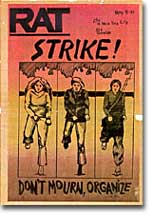
Rat, an underground radical feminist newspaper. This cover from a 1970 issue.
"Say it loud, I'm Black and I'm proud." -soul singer James Brown
A woman needs a man like a fish needs a bicycle." — women's rights leader Gloria Steinem
"We have a power that comes from the justice of our cause." -farm workers leader Cesar Chavez
"If they close up all the gay joints in this area, there is going to be all out war." -gay rioter at Stonewall
"The miracle today is communication. So let's use it." -John Lennon, 1969
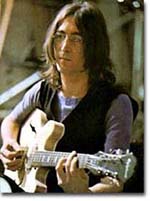
John Lennon's peaceful lyrics typified the feelings of a generation. "Imagine no possessions / I wonder if you can / No need for greed or hunger / A brotherhood of man / Imagine all the people / Sharing all the world..." -from "Imagine"
As awareness was being raised across America about civil rights for African Americans, it was only natural that other groups who felt marginalized by the American mainstream to make demands of their own. Not since the drive for suffrage had a drive for women's rights met with much success. A new FEMINIST MOVEMENT emerged in the 1960s pressing for modern reforms.
With few exceptions, women were excluded from the highest paying jobs, earning only a fraction of the wages of their male counterparts. The 1950s cult of the housewife discouraged women from holding full-time jobs and from seeking higher degrees. The call for legality and availability of birth control options like the pill galvanized many of feminists. Eventually, the right to obtain a safe, legal abortion became a new milestone. These demands and others led to the proposal of an Equal Rights Amendment to the Constitution, which would forever ban sex discrimination in the nation's laws and practices.
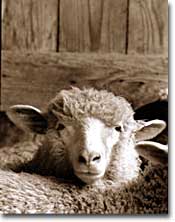
One example of the changing ideals in education was Hampshire College, an alternative institution that opened in the early '70s. The college took a tree as its symbol, allowed sheep on its grounds, and permitted and even encouraged students to try experiments in alternative living.
LATINO AMERICANS and NATIVE AMERICANS had also languished in the bottom economic strata throughout much of the prosperous 1950s. Radical and moderate ethnic leaders organized to close this gap. By the end of the decade, the time was ripe for gay Americans to demand equality as well. The politics of identity dominated America as these and other disadvantaged American groups found their voices of protest.
Another battle cry was sounded to save the planet from environmental destruction. Toxic emissions, deadly pesticides, and fears of nuclear holocaust brought many concerned Americans together in the earth awareness movement. This time "GREEN" ACTIVISTS went beyond conservation of resources to demand regulation of economic activities that could hurt the nation's environment.
In the 1960s, the first baby boomers entered college. These students were the largest class of young Americans ever to enter the halls of ivy. Unlike the "Silent Generation" of 1950s youth, the baby boomers were vocal about reforming democracy in the United States and the American presence abroad. College administrators were confronted with inspired students requesting reforms of the core academic curriculum, greater opportunities for free speech, and more relaxed college rules. A small, but highly visible segment of students withdrew from the mainstream and created a counterculture with profound impact on American values, fashion, and music.
Modern Feminism
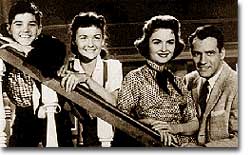
Before the 1960s, traditional American society encouraged young women to find happiness and fulfillment through marriage and homemaking. Television shows like "The Donna Reed Show" presented an image of domestic bliss in a pleasant suburban setting.
"Motherhood is bliss." "Your first priority is to care for your husband and children." "Homemaking can be exciting and fulfilling."
Throughout the 1950s, educated middle-class women heard advice like this from the time they were born until they reached adulthood. The new suburban lifestyle prompted many women to leave college early and pursue the "cult of the housewife." Magazines such as Ladies Home Journal and Good Housekeeping and television shows such as "Father Knows Best" and "The Donna Reed Show" reinforced this idyllic image.
But not every woman wanted to wear pearls and bring her husband his pipe and slippers when he came home from work. Some women wanted careers of their own.
In 1963, BETTY FRIEDAN published a book called THE FEMININE MYSTIQUE that identified "the problem that has no name." Amid all the demands to prepare breakfast, to drive their children to activities, and to entertain guests, Friedan had the courage to ask: "Is this all there is?" "Is this really all a woman is capable of doing?" In short, the problem was that many women did not like the traditional role society prescribed for them.
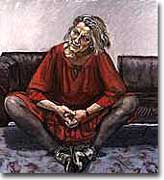
Germaine Greer burst onto the feminist scene in 1970 with her book The Female Eunuch. In it, Greer urged women to break down the societal barriers of the era. Her 1999 book, The Whole Woman, continued with this theme, telling women that it was "time to get angry again."
Friedan's book struck a nerve. Within three years of the publication of her book, a new feminist movement was born, the likes of which had been absent since the suffrage movement. In 1966, Friedan, and others formed an activist group called the NATIONAL ORGANIZATION FOR WOMEN. NOW was dedicated to the "full participation of women in mainstream American society."
They demanded equal pay for equal work and pressured the government to support and enforce legislation that prohibited gender discrimination. When Congress debated that landmark Civil Rights Act of 1964, which prohibited discrimination in employment on account of race, conservative Congressmen added gender to the bill, thinking that the inclusion of women would kill the act. When this strategy backfired and the measure was signed into law, groups such as NOW became dedicated to its enforcement.
Like the antiwar and civil rights movements, feminism developed a radical faction by the end of the decade. Women held "consciousness raising" sessions where groups of females shared experiences that often led to their feelings of enduring a common plight.
In 1968, radical women demonstrated outside the Miss America Pageant outside Atlantic City by crowning a live sheep. "FREEDOM TRASH CANS" were built where women could throw all symbols of female oppression including false eyelashes, hair curlers, bras, girdles, and high-heeled shoes. The media labeled them bra burners, although no bras were actually burned.
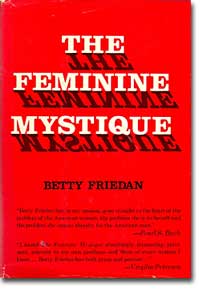
Betty Friedan's 1963 work The Feminine Mystique noted that society placed women almost exclusively in the role of the homemaker and then challenged women with the question "Is this all there is?" The book proved to be a catalyst for a women's rights movement and by 1966, Friedan had established the National Organization for Women.
The word "SEXISM" entered the American vocabulary, as women became categorized as a target group for discrimination. Single and married women adopted the title MS. as an alternative toMiss or Mrs. to avoid changing their identities based upon their relationships with men. In 1972, GLORIA STEINEMfounded a feminist magazine of that name.
Authors such as the feminist GERMAINE GREER impelled many women to confront social, political, and economic barriers. In 1960, women comprised less than 40 percent of the nation's undergraduate classes, and far fewer women were candidates for advanced degrees. Despite voting for four decades, there were only 19 women serving in the Congress in 1961. For every dollar that was earned by an American male, each working American female earned 59¢. By raising a collective consciousness, changes began to occur. By 1980, women constituted a majority of American undergraduates.
As more and more women chose careers over housework, marriages were delayed to a later age and the birthrate plummeted. Economic independence led many dissatisfied women to dissolve unhappy marriages, leading to a skyrocketing divorce rate.
SUPREME COURT JUSTICE RUTH BADER GINSBURG, invoking the memory of her mother, evokes the mood of the women's rights movement: "I pray that I may be all that she would have been had she lived in an age when women could aspire and achieve, and daughters are cherished as much as sons."
The Fight for Reproductive Rights

Introduced in 1960, birth control pills gave women the opportunity to choose to deter pregnancy.
The consequences of sexual relations between women and men simply were not fair.
An old double standard dictated that men were rewarded for sexual prowess and women suffered a damaged reputation. Males were encouraged to "sow a few wild oats" while women were told "good girls don't."
Most of all, if a relationship resulted in pregnancy, it was the woman who was left with the responsibility. For decades, pioneers likeMARGARET SANGER fought for CONTRACEPTIVES that women would control. With the introduction of the BIRTH CONTROL PILL to the market in 1960, women could for the first time deter pregnancy by their own choice.
The fight for reproductive freedoms was intense. Organized religions such as the Roman Catholic Church stood firm on their principles that artificial contraceptives were sinful. Many states in the early 1960s prohibited the sale of contraceptives — even to married couples.
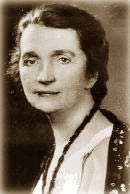
Margaret Sanger was a pioneer in the struggle for a woman's right to birth control in an era when it was illegal to discuss the topic. She was arrested or charged with lawlessness many times for both her publications and her New York City clinics.
In a landmark decision, GRISWOLD V. CONNECTICUT(1965), the Supreme Court ruled such laws were unconstitutional. Setting a precedent, the Court determined that a fundamental right to privacy exists between the lines of the Constitution. Laws prohibiting contraceptive choice violated this sacred right. The ban of prohibitive laws was extended to unmarried couples in EISENSTADT V. BAIRD (1972). A federal judge imparted the right to purchase contraceptives to unmarried minors in 1974.
The pill made it finally possible for American women to separate sexuality and childbearing. MASTERS AND JOHNSON, a pioneering research team in the field of human sexuality, challenged entrenched beliefs that women did not enjoy sex and were merely passive partners.
Reports of premarital sex increased dramatically as the "SEXUAL REVOLUTION" spread across America. Young couples began COHABITING — living together before marriage — in greater and greater numbers. Critics denounced the tremendous change in lifestyle.
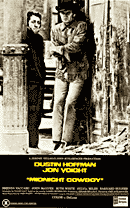
With the advent of the "sexual revolution" during the late 60s and early 70s, American culture began to create new boundaries of what was and was not acceptable. In 1969,Midnight Cowboybecame the first X-rated film to win Academy Awards for Best Screenplay, Director and Picture.
But those in favor of this new trend maintained that young people were simply more open and honest about activities that had traditionally transpired behind closed doors and shielded from public scrutiny. As attitudes toward sexuality relaxed, the entertainment industry rode the wave. Courts were more permissive with pornographic materials and the movies and television pressed new boundaries with controversially suggestive content. "R-rated" and even "X-rated" films became commonplace.
Inevitably the reproductive struggle took aim at laws that restricted ABORTION. Throughout the 1960s, there was no national standard on abortion regulations, and many states had outlawed the practice. Feminist groups claimed that illegality led many women to seek black market abortions by unlicensed physicians or to brutally perform the procedure on themselves.
In 1973, the Supreme Court heard the case of the anonymous Jane Roe, an unmarried Texas mother who claimed the state violated her constitutional rights by banning the practice. By a 7-2 vote, the Court agreed. Since ROE V. WADE, the battle lines have been drawn between pro-choice supporters of abortion rights and pro-life opponents who seek to chisel away at the Roe decision.
The Equal Rights Amendment
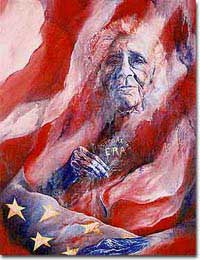
As founder of the National Women's Party, Alice Paul first introduced the Equal Rights Amendment to Congress in 1923. Paul would work for the passage of the ERA until her death in 1977.
"Equality of rights under the law shall not be abridged by the United States or by any State on account of sex."
This simple sentence comprised Section 1 of the EQUAL RIGHTS AMENDMENT (ERA), which was first proposed in Congress by the National Women's Party in 1923. Feminists of the late 1960s and early 1970s saw ratification of the amendment as the only clear-cut way to eliminate all legal gender-based discrimination in the United States.
Amending the Constitution is a two-step process. First, the Congress must propose the amendment by a two-thirds majority in both the House and Senate. After proposal, it must be ratified by three-fourths of the state legislatures. Organizations like the National Organization of Women (NOW) began a hard push for the ERA in 1970.
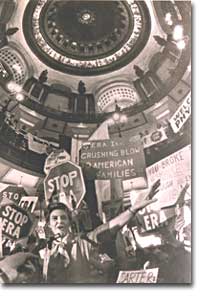
Phyllis Schlafly was perhaps the most visible opponent of the Equal Rights Amendment. Her "Stop ERA" campaign hinged on the belief that the ERA would eliminate laws designed to protect women and led to the eventual defeat of the amendment.
Leaders such as Gloria Steinem addressed the legislature and provided argument after argument in support of the ERA. The House approved the measure in 1970, and the Senate did likewise in 1972. The fight was then taken to the states. ERA-supporters had the early momentum. Public opinion polls showed strong favorable support. Thirty of the necessary thirty-eight states ratified the amendment by 1973.
But then the tide turned. From nowhere came a highly organized, determined opposition that suggested that ratification of the ERA would lead to the complete unraveling of traditional American society.
The leader of the STOP-ERA CAMPAIGN was a career woman named PHYLLIS SCHLAFLY. Despite her law degree, Schlafly glorified the traditional roles of American women. She heckled feminists by opening her speaking engagements with quips like "I'd like to thank my husband for letting me be here tonight." Schlafly argued that the ERA would bring many undesirable changes to American women.
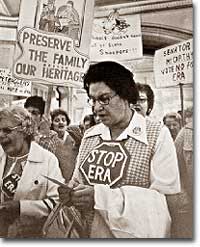
The fight over the Equal Rights Amendment did not pit women against men — it pitted two ideologies against eachother.
Protective laws like sexual assault and alimony would be swept away. The tendency for the mother to receive child custody in a divorce case would be eliminated. The all-male military draft would become immediately unconstitutional. Those opposed to the ERA even suggested that single-sex restrooms would be banished by future courts.
Stop-ERA advocates baked apple pies for the Illinois legislature while they debated the amendment. They hung "Don't draft me" signs on baby girls. The strategy worked. After 1973, the number of ratifying states slowed to a trickle. By 1982, the year of expiration, only 35 states had voted in favor of the ERA — three states shy of the necessary total.
Feminist groups maintained that a serious blow was struck toward the idea of gender equity in the United States. They also saw women divided against other women. Despite early gains by the feminist movement, the rise in social conservatism led Americans of both genders to draw limits on a constitutionally mandated equality between the sexes.
Roe v. Wade and Its Impact
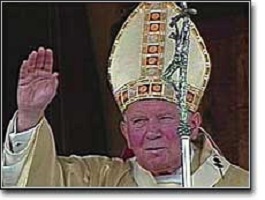
Pope John Paul II is a leader in the pro-life movement. During his landmark 1998 visit to Cuba, he criticized the island's legalized abortion policies.
No topic related to the feminist movement has aroused such passion and controversy as much as the right to an abortion. In the 1960s, there was no federal law regulating abortions, and many states had banned the practice entirely, except when the life of the mother was endangered.
Women's groups argued that illegality led many women to seek black market abortions by unlicensed physicians or to perform the procedure on themselves. As a result, several states such as California and New York began to legitimize abortions. With no definitive ruling from the federal government, women's groups sought the opinion of the United States Supreme Court.
The battle began in Texas, which outlawed any type of abortion unless a doctor determined that the mother's life was in danger. The anonymous Jane Roe challenged the Texas law, and the case slowly made its way to the highest court in the land.
After two years of hearing evidence, the Court invalidated the Texas law by a 7-2 vote. Using the same reasoning as the Griswold v. Connecticut decision, the majority of the justices maintained that a right to privacy was implied by the Ninth and Fourteenth Amendments. No state could restrict abortions during the first three months, or trimester, of a pregnancy.
States were permitted to adopt restrictive laws in accordance with respecting the mother's health during the second trimester. The practice could be banned outright during the third trimester. Any state law that conflicted with this ruling was automatically overturned.
Women's groups were ecstatic. But immediately an opposition emerged. The Roman Catholic Church had long criticized abortion as a form of infanticide. Many fundamentalist Protestant ministers joined the outcry. The NATIONAL RIGHT TO LIFE COMMITTEE formed with the explicit goal of reversing Roe v. Wade.
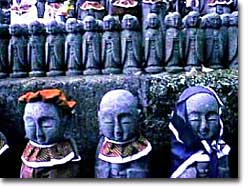
Religious traditions throughout the world have very different views on unborn children. In Japan, the Bodhisattva Jizo is the guardian of unborn children and expectant mothers. Legend has it that when babies die, they are sent to the underworld for causing their parent's great suffering. Jizo rescues the children from that punishment.
The issue is fundamentally thorny because it involves basic faiths. Those who believe life begins at conception feel that the unborn child deserves the same legal protections as an adult. Ending such a life is equivalent to murder to those who subscribe to this belief. Others argue that life begins at birth, and that laws restricting abortion interfere with the right of a woman to decide what is in her own best interests. Opponents of abortion use the label "PRO-LIFE" to define their cause. Supporters of Roe v. Wadeidentify themselves as "PRO-CHOICE."
Since 1973, the battle has raged. Pro-life groups began to lobby their Senators and Representatives to propose a Right-to-Life Amendment to the Constitution. Although introduced in Congress, the measure has never received the necessary support. Pro-choice groups such as the NATIONAL ABORTION RIGHTS ACTION LEAGUE fear that a slow erosion of abortion rights has taken place since Roe v. Wade.
The HYDE AMENDMENT OF 1976 prohibits the use of federal Medicaid funds to be used for abortions. Later Court decisions such as PLANNED PARENTHOOD V. CASEY(1992) have upheld the right of states to impose waiting periods and parental notification requirements. President George Bush imposed a "gag rule" that prohibited workers in federally funded clinics from even mentioning abortion as an option with their patients. Bill Clinton promptly ended the gag rule in 1993.
Planned Parenthood clinics have become local battlegrounds over the abortion controversy. Since Planned Parenthood prides itself in providing safe, inexpensive abortions, protesters regularly picket outside their offices. Several Planned Parenthood sites have even been bombed by antiabortion extremists.
The fate of Roe v. Wade continues to lie with the Supreme Court. Although every ruling since 1973 upheld the decision, the composition of the Court changes with every retirement. Activists on each side demand a "litmus test" for any justice named to the federal courts. Republicans have tended to appoint pro-life judges, and Democrats have selected pro-choice nominees.
At the dawn of the 21st century, the battle remains as fierce as ever.
Environmental Reform
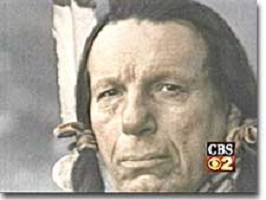
The early 1970s saw a series of public service announcements designed to increase public awareness of environmental issues. One of the most memorable images from the campaign featured Iron Eyes Cody shedding a profound tear in response to widespread pollution.
It was time to save the earth.
A century of full-fledged industrialism in America had taken its toll on the environment. Concerned citizens began to appeal in earnest to protect more of the nation's wilderness areas. Emissions into the atmosphere were creating smoggy haze rings above many metropolitan centers. Trash was piling up. Many Americans felt free to deposit waste from their increasingly disposable society along the sides of the roads. In the climate of social activism, the 1960s also became a decade of earth action.
RACHEL CARSON sent a wake-up call to America with her 1962 book SILENT SPRING. Carson wrote of the horrors of DDT, a popular pesticide used on many American farms. DDT wrought havoc on the nation's bird population. The pesticide, when ingested by birds, proved poisonous. Carson then witnessed a spring where birds did not return to farms.
The book created a firestorm of concern for the environment. Many students involved in the peace and civil rights movements also embraced the call for environmental awareness. President Johnson responded with the WILDERNESS PROTECTION ACT, the WATER QUALITY ACT, and the AIR QUALITY ACT. An activist organization named GREENPEACE formed in 1969.
Inspired by SENATOR GAYLORD NELSON and created by students, the nation celebrated its first EARTH DAY on April 22, 1970. President Nixon, despite his overall lack of sympathy for the earth movement, could not resist supporting popular environmentalist measures.
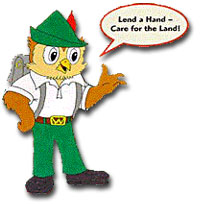
Hoping to inspire the younger generation to take better care of the environment, the U.S. Department of Agriculture's Forest Service created "Woodsy Owl" in 1970. Woodsy's original request of "Give a Hoot, Don't Pollute" has been updated to "Lend a Hand — Care for the Land!"
In 1970, he signed legislation creating theENVIRONMENTAL PROTECTION AGENCY, a federal watchdog dedicated to proper care of the planet. He also stiffened standards for emissions and waste with the Clean Air and Clean Water Acts. The Endangered Species Act also provided much needed protection to wildlife on the brink of annihilation.
For years, the environmentalists had two major factions. Conservationists such asTHEODORE ROOSEVELT believed that the nation's natural heritage could be maintained through wise, efficient use of resources.
Preservationists such as JOHN MUIR and the SIERRA CLUB celebrated the majesty of the landscape and preferred protection of wilderness areas. The 1960s ushered in the ecologists, who studied the relationships between living organisms and their environments. Pollution was destroying this delicate balance, and the result could be health problems, extinction of species, or even planetary destruction.
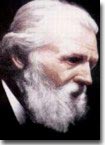
As a founder of the Sierra Club in 1892, John Muir served as an inspiration to environmental reformers of the 1960s.
Young Americans learned ecology in elementary school as a nationwide awareness campaign attempted to raise consciousness. WOODSY THE OWL advised youngsters to "never be a dirty bird." Thousands felt their heartstrings tugged as they viewed television advertisements depicting mountains of trash culminating with a pensive Native American shedding a single, mournful tear.
The 1970s brought growing concerns with the NUCLEAR POWER INDUSTRY. Fission plants produced hazardous by-products that were difficult to dispose of safely. An accident at a nuclear power plant at THREE MILE ISLANDnear Harrisburg nearly released a lethal bubble of radioactive gas into the atmosphere in 1979. Pressure groups mounted protests against nuclear testing by the United States. President Carter announced a bold initiative to develop renewable sources of energy.
Although many environmentalists were disappointed that all goals were not reached, substantive changes did improve the quality of American air and water, and the nation had its eyes open to the need to preserve the planet.
Others Demand Equality
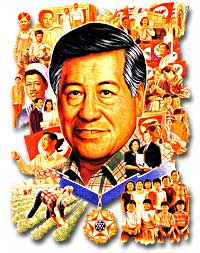
Cesar Chavez used tactics similar to those used by Martin Luther King, Jr. in his attempts to improve working conditions for migrant farm workers in the American Southwest. Hunger strikes and boycotts — combined with his creation of the United Farm Workers union — brought much needed change.
The 1960s broadened the traditional definition of civil rights, as the politics of identity exploded in the United States. As African Americans and women demanded much needed reforms, other groups who felt on the margins of American society organized as well. The climate was conducive to change, and many felt the need to seize the moment. Latino Americans, Native Americans, and gay Americans demanded fair treatment and inclusion under the banner of civil rights.
MEXICAN AMERICANS, or CHICANOS, were steadily growing in population in the American Southwest throughout the twentieth century. In 1965, CESAR CHAVEZled a strike on behalf of the migrant farm workers in California. Chavez used the strategies of Martin Luther King to reach his goals of higher pay and better working conditions. In addition to the strike, he organized the UNITED FARM WORKERS union and enacted a nationwide boycott of grapes to support his cause. Responding to the mistreatment of union membership in the fields, Chavez commenced a three-week hunger strike to receive national attention. When the grape growers recognized his union in 1970, his deeds were vindicated.
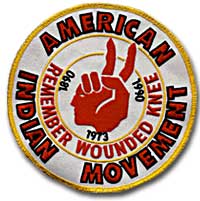
The American Indian Movement grabbed America's attention through brash stunts. One such action was the seizure of Alcatraz Island and the subsequent offer to the U.S. government to buy back the land for the same small sum that settlers offered to Native Americans for Manhattan Island in 1626.
Not all Mexican American activism followed King's approach. A group known as the BROWN BERETS, who modeled themselves after the Black Panthers, strove to take control of the streets of Chicano neighborhoods. They battled the Immigration and Naturalization Service, and chanted "Brown Power" in the same spirit that Stokely Carmichael chanted "Black Power."
As politics became more radicalized, a"RED POWER" MOVEMENT emerged in Native American communities. In urban Native American ghettoes across the Midwest, the AMERICAN INDIAN MOVEMENT (AIM) took shape. Members of AIM were tired of working through a system they believed was the primary reason many Native Americans lived in dire poverty. They chose attention-grabbing stunts as the means to draw attention to their cause.
In 1969, members of AIM seized ALCATRAZ ISLAND in San Francisco Bay. AIM members offered the United States government the equivalent amount of trinkets that PETER MINUIT paid to the inhabitants of Manhattan Island in 1626. For 18 months the occupation forces held firm. In 1972, AIM protesters occupied the BUREAU OF INDIAN AFFAIRS building in Washington, DC. The final battle of the war for the Great Plains was re-enacted in 1973 when members of AIM seized WOUNDED KNEE in South Dakota. After a 71 day holdout, the siege collapsed.
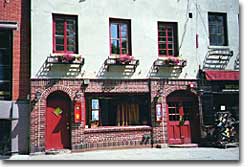
In June 1969, New York City police raided the Stonewall Inn for operating without a liquor license. Hundreds of homosexual patrons — feeling the Inn had been singled out because of its homosexual clientele — reacted with riots and protests that lasted several days.
Identity politics flared amongHOMOSEXUAL AMERICANS as well. The catalyst for the gay rights movement came when New York City police officers raided theSTONEWALL INN in May 1969. The patrons of the bar felt singled out for police harassment for years, but this time they fought back, hurling rocks, fists, and insults at the police. On the one year anniversary of the STONEWALL RIOT, the first gay rights parade was staged in New York City. Although many legal rights and protections such as marriage for gay Americans remained out of reach into the twenty-first century, small gains were achieved in the years that followed Stonewall. In 1974, the American Psychiatric Association officially removed homosexuality from its list of mental illnesses. By the mid-1970s, the FBI no longer considered homosexuals a security risk, and gays were no longer denied civil service jobs based on their sexual orientation.
Although the fight for societal acceptance rages on, the many civil rights movements were born in the cauldron of the protest movements of the turbulent 1960s.
Student Activism
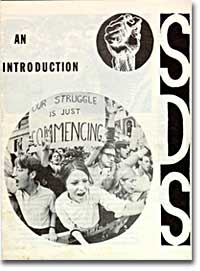
The Students for a Democratic Society — or SDS — became the leaders of the American anti-war movement following the release of the Port Huron Statement. The above pamphlet served as an introduction to the SDS struggle against U.S. involvement in Vietnam.
In June 1962, the founding members ofSTUDENTS FOR A DEMOCRATIC SOCIETY(SDS) ratified the PORT HURON STATEMENT. The Huron Statement was a manifesto, largely written by a young student namedTOM HAYDEN, condemning middle-class materialism, racism, conformity, and anticommunism.
Strongly influenced by C. WRIGHT MILLS'THE POWER ELITE, SDS members feared that the Cold War was undermining American democracy. A military-industrial complex seemed to be driving the United States. Military leaders justified huge budgets by involvement in foreign wars. The expenditures led to major defense contracts for industrialists and millions of jobs across America. The liberal establishment of Kennedy and Johnson accepted the trend for fear of losing powerful supporters and thousands of votes from working Americans. The results, they claimed led to unjust involvement in foreign conflicts. Hayden called for "PARTICIPATORY DEMOCRACY," — grassroots organizations where the true voices of Americans could be heard.
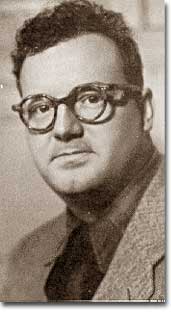
C. Wright Mills' 1956 book The Power Elite contended that a small group of Americans — including members of government, titans of industry and military leaders — were responsible for the fate of the Nation. His theories provided inspiration for the student activists of the 1960s who sought to return this power to ordinary citizens.
SDS became the leaders of the antiwar movement in America. Drawing support from the civil rights movement, SDS chapters organized local demonstrations on college campuses and marches to the steps of the Capitol Building. They worked in inner cities to provide free lunches and participated in voter drives to turn out the African American electorate in the Deep South. In addition to these causes, the movement was concerned with student rights. Many universities required a dress code, curfews, and restrictions on free speech. As SDS advocated a freer society, they pointed their arguments to their deans as well as their political representatives.
With the growth of SDS, the NEW LEFTflourished in America. Student leaders labeled the OLD LEFT the Socialists of a bygone era. The Old Left was concerned with the problems brought by poverty, while the New Left criticized the suburban conformity and career materialism spawned by postwar affluence as well. They were critical of their left-leaning national politicians. SDS leaders did not believe Kennedy and Johnson were sincere in their support of civil rights. In the wake of McCarthyism, taking a soft stand on communism was unthinkable to Washington politicians. While the New Left did not glorify the Soviet system, they were willing to blame both the United States and the Soviet Union for escalating the Cold War.
As the decade came to a close, SDS fragmented into moderate and radical factions much like most other movements. Although most SDS members were dedicated to peaceful protest, some did go beyond marches to the occupation of buildings and confrontations with the police. An extreme branch of SDS splintered off to form the Weathermen in 1970. This group was a terrorist organization openly committed to a violent overthrow of the government. FBI scrutiny forced many Weathermen underground before long.
Flower Power
Make love, not war. Don't trust anyone over 30. Turn on, tune in, and drop out. I am a human being — please do not fold, bend spindle, or mutilate.
These and many more became slogans for emerging youth culture — aCOUNTERCULTURE — in the 1960s. The baby boom was entering its teen years, and in sheer numbers they represented a larger force than any prior generation in the history of the United States. As more and more children of middle-class Americans entered college, many rejected the suburban conformity designed by their parents.
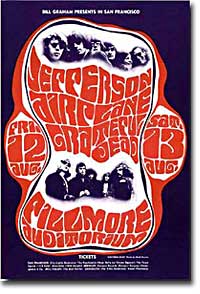
The Haight-Ashbury section of San Francisco gave rise to many of the popular rock groups of the era, including Jefferson Airplane and the Grateful Dead. This poster advertises a concert held at the Fillmore Auditorium, a popular San Francisco venue for psychedelic bands.
Never more than a minority movement, the so-called "HIPPIE" lifestyle became synonymous with American youth of the 1960s. Displaying frank new attitudes about drugs and sex, communal lifestyles, and innovations in food, fashion, and music, the counterculture youth of America broke profoundly with almost all values their parents held dear.
The sexual revolution was in full swing on American college campuses. Birth control and a rejection of traditional views of sexuality led to a more casual attitude toward sex. Displays of public nudity became commonplace. Living together outside marriage shattered old norms.
In addition to changes in sexual attitudes, many youths experimented with drugs. Marijuana and LSD were used most commonly, but experimentation with mushrooms and pills was common as well. A Harvard professor named TIMOTHY LEARYmade headlines by openly promoting the use of LSD. There was a price to be paid for these new attitudes. With the new freedom came an upsurge of venereal diseases, bad trips, and drug addictions.
Like the UTOPIAN SOCIETIES of the 1840s, over 2000 rural communes formed during these turbulent times. Completely rejecting the capitalist system, many communes rotated duties, made their own laws, and elected their own leaders. Some were philosophically based, but others were influenced by new religions. Earth-centered religions, astrological beliefs, and Eastern faiths proliferated across American campuses. Some scholars labeled this trend as the THIRD GREAT AWAKENING.
Most communes, however, faced fates similar to their 19th century forebears. A charismatic leader would leave or the funds would become exhausted, and the commune would gradually dissolve.
One lasting change from the countercultural movement was in American diet. Health food stores sold wheat germ, yogurt, and granola, products completely foreign to the 1950s America. Vegetarianism became popular among many youths. Changes in fashion proved more fleeting. Long hair on young men was standard, as were Afros. Women often wore flowers in their hair. Ethnic or peasant clothing was celebrated.. Beads, bellbottom jeans, and tie-dyed shirts became the rage, as each person tried to celebrate his or her own sense of individuality.
The common bond among many youths of the time was music. Centered in the HAIGHT-ASHBURY section of San Francisco, a new wave of psychedelic rock and roll became the music of choice. Bands like the GRATEFUL DEAD,JEFFERSON AIRPLANE, and the DOORS created new sounds with electrically enhanced guitars, subversive lyrics, and association with drugs.
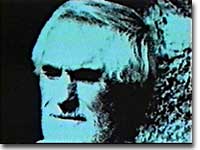
Dr. Timothy Leary — seen here in his later years — encouraged people of the 1960s to "Turn On, Tune In, and Drop Out" through the use of psychedelic drugs such as LSD.
Folk music was fused with rock, embodied by the best-known solo artist of the decade, BOB DYLAN. When the popularBEATLES went psychedelic with their landmark album SGT PEPPER'S LONELY HEARTS CLUB BAND, counterculture music became mainstream.
It is important to note that the counterculture was probably no more than ten percent of the American youth population. Contrary to common belief, most young Americans sought careers and lifestyles similar to their parents. Young educated people actually supported the war in Vietnam in greater numbers than older, uneducated Americans. The counterculture was simply so outrageous that the media made their numbers seem larger than in reality. Nevertheless, this lifestyle made an indelible cultural impact on America for decades to come.
What happened to the ideals of the counterculture? Why weren't they able to sustain their utopian views? In part there views were subsumed by the greater culture. Moreover, it's one thing to say you want a revolution, quite another to try to affect one.
